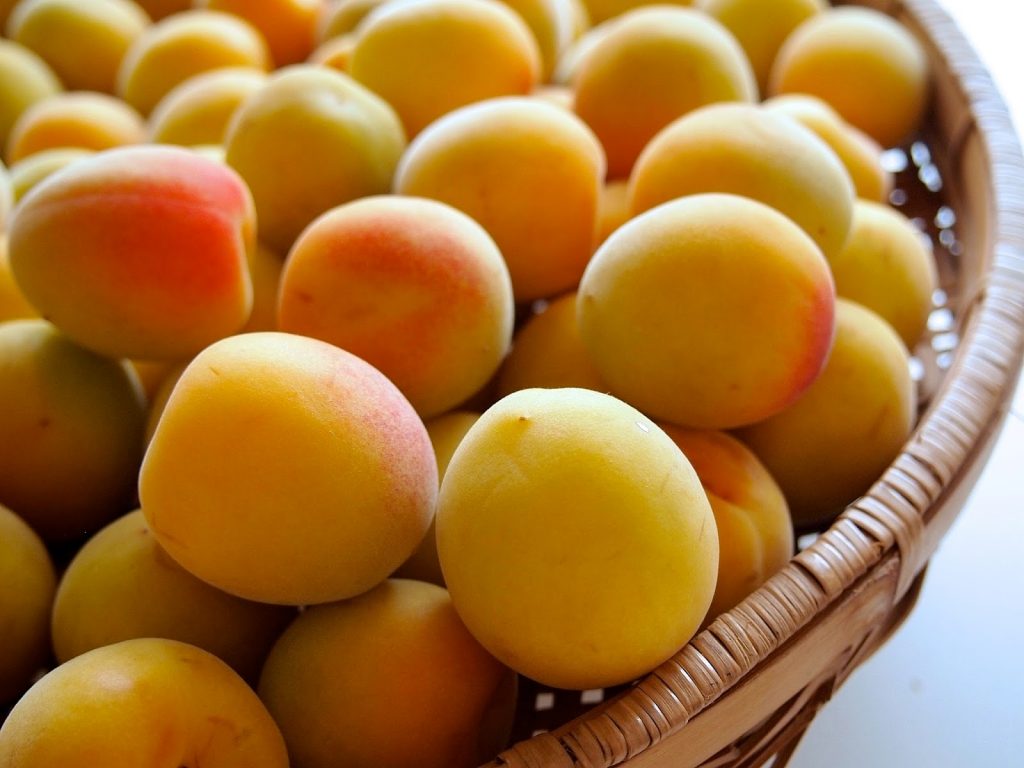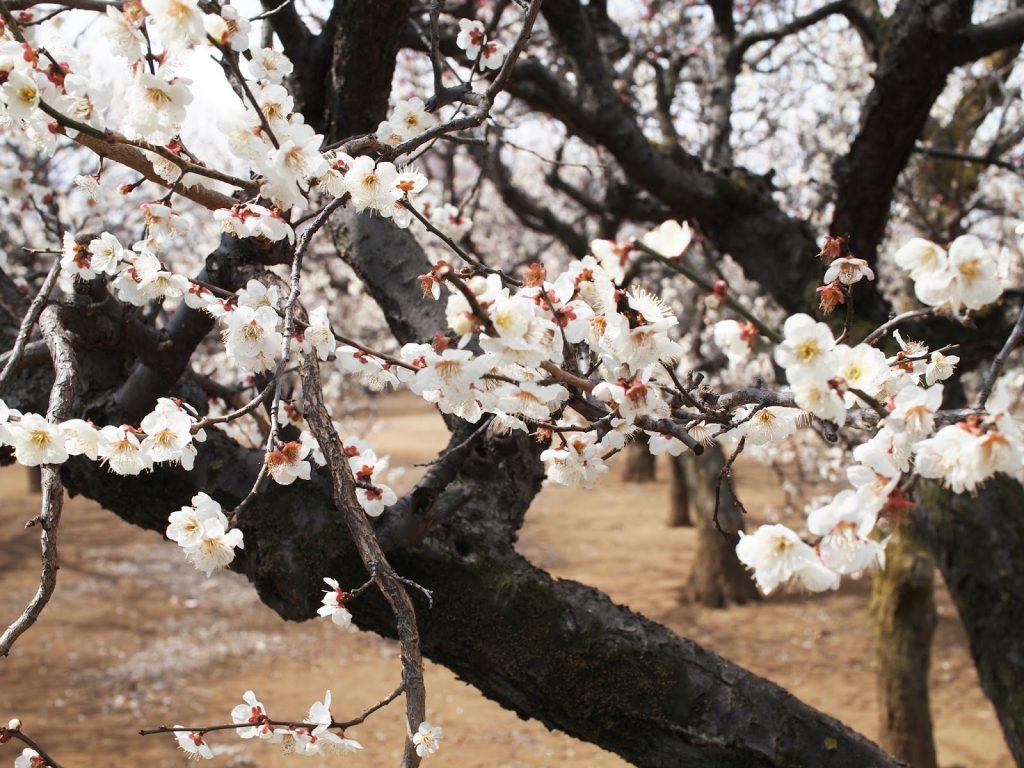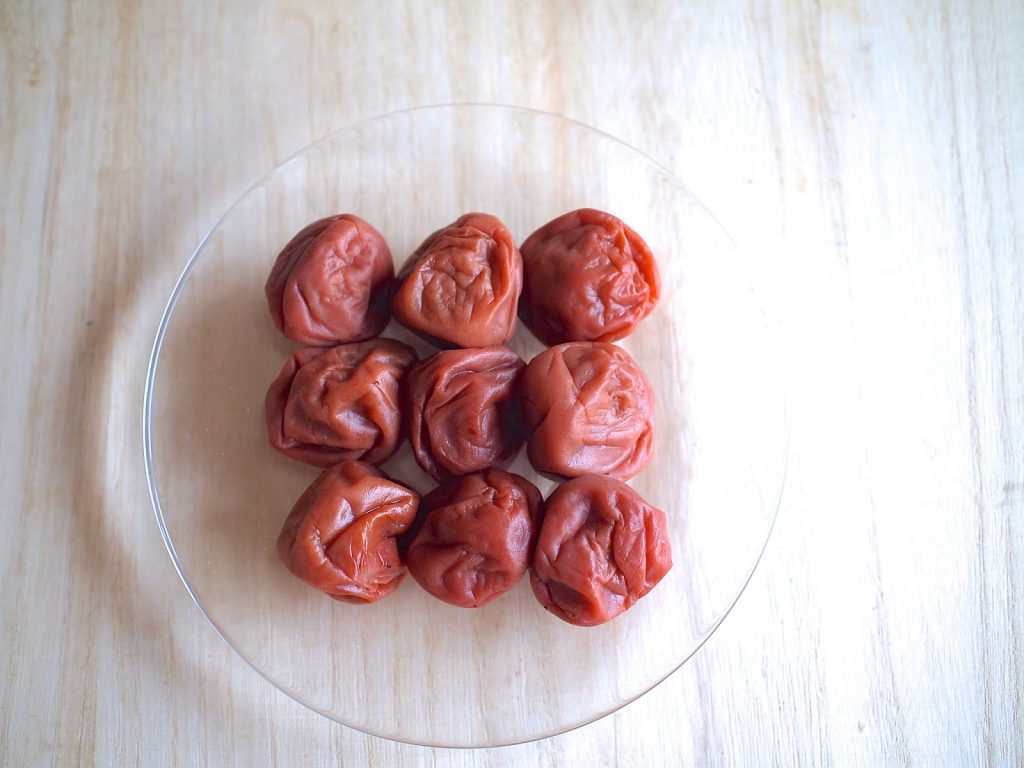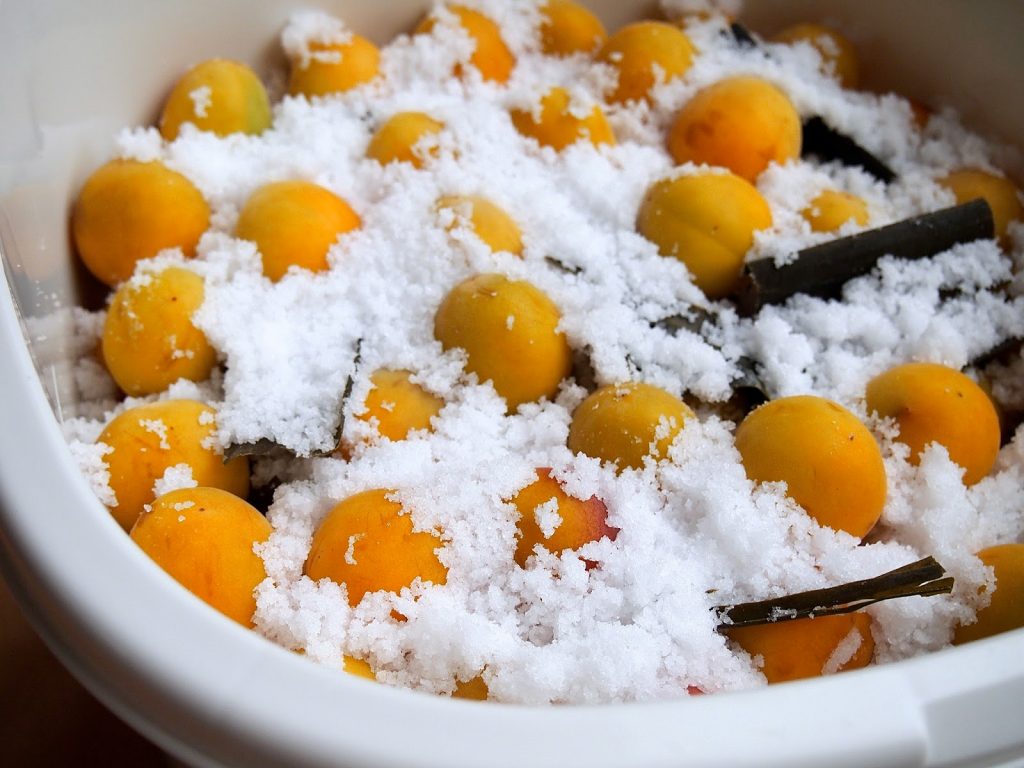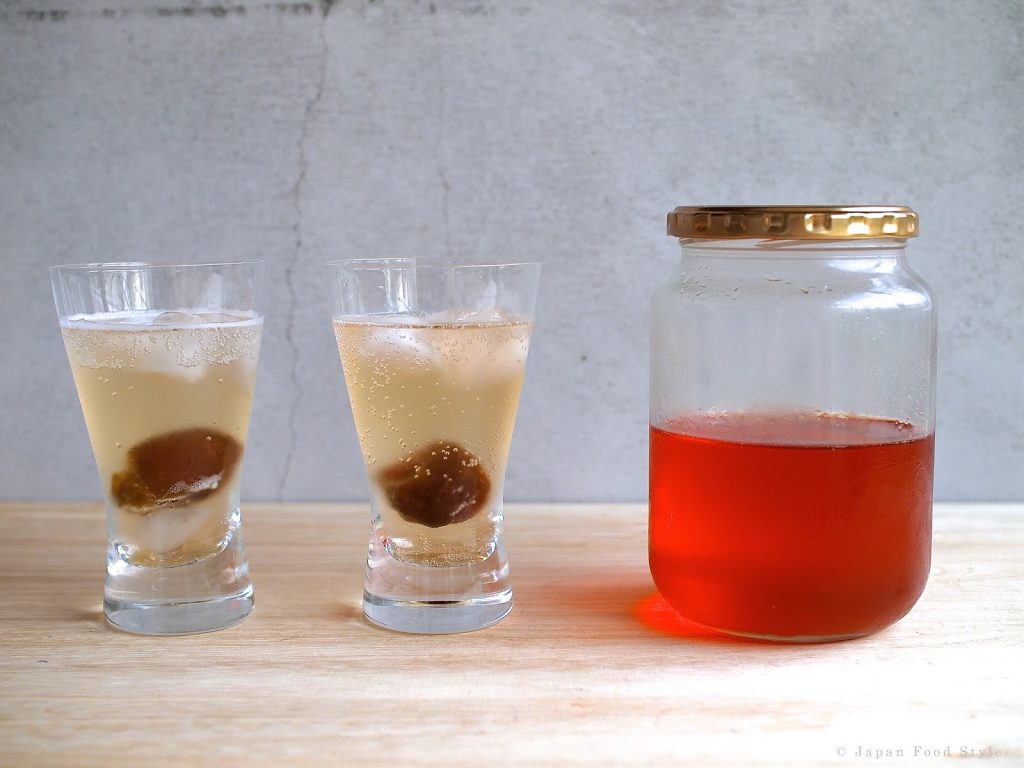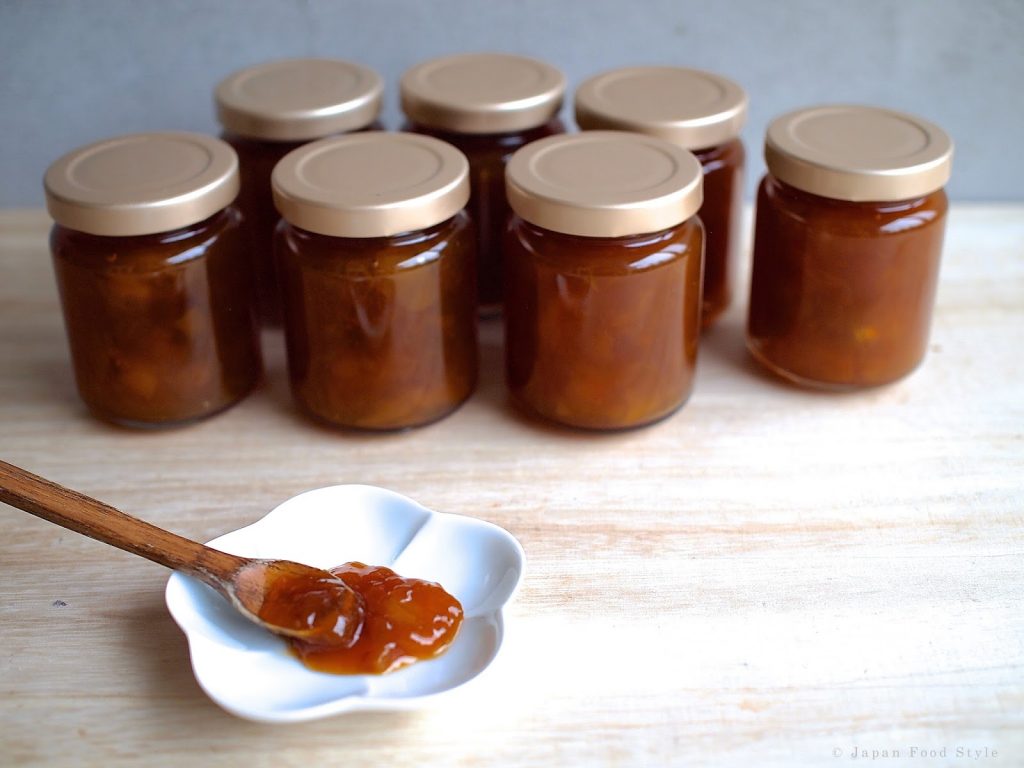1, Umeboshi (Pickled Ume)
Umeboshi are pickled plums and renowned as great health foods. They are very salty and sour, so generally eaten in small quantity. But, they have a great act as antibacterial, recovery from fatigue, and helps digestion. Umeboshi are usually eaten with plain boiled rice, Onigiri (rice balls), Makizushi (rolled sushi), Ochazuke, Bento, etc. And they are often eaten as a cooking accent for some noodles, tofu dishes, salads and some fish dishes.
Making the Umeboshi is simple, but it takes about a month. First, wash and salted ripe ume, After ume juice appeared, put the red perilla, and dry in the sun for three days and three nights. After that, we can eat them, but after a year, It becomes good taste. Umeboshi can be preserved for several years or more.
2, Ume Juice
This juice is made from green-ume and sugar, It also has an effect as recovery from fatigue, so It’s a nice summer drink for preventing summer heat fatigue.
3, Ume jam
Ume jam is similar to apricot jam, but it tastes sourer than apricot jam. Recently, many fruits in Japan are becoming sweeter, so some fruits aren’t suitable for making jam because of their too much sweetness. Ume jam’s sour-sweet taste is precious for me.
